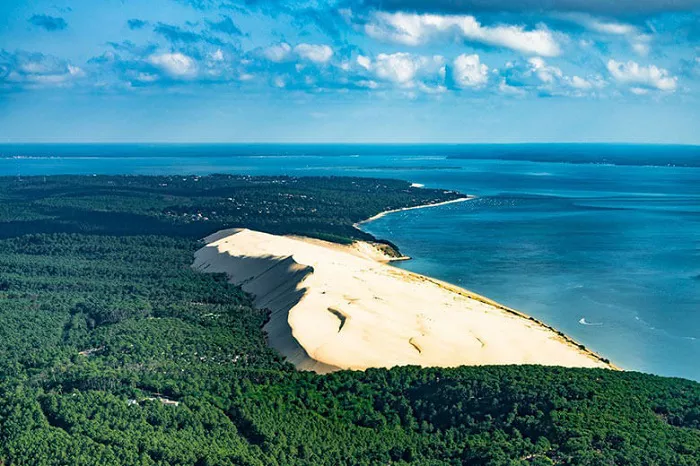LA TESTE-DE-BUCH, FRANCE — As the summer season approaches, tensions are mounting over how to balance tourism and conservation at the Dune du Pilat, Europe’s tallest sand dune, three years after devastating wildfires ravaged the surrounding landscape.
Located southwest of Bordeaux on France’s Atlantic coast, the Dune du Pilat is a dynamic natural monument, stretching nearly three kilometers and reaching a height of around 100 meters. A magnet for tourists and paragliders, the dune attracts over two million visitors annually. However, its future is now at the center of a growing debate following the 2022 wildfires, which destroyed more than 30,000 hectares of nearby maritime pine forests and vegetation essential to stabilizing the dune.
The fires, ignited by a small truck that caught fire, also obliterated five local campsites, three of which remain only partially operational. In the aftermath, reconstruction efforts have sparked controversy, with critics accusing local authorities of enabling development that threatens the ecological integrity of the site.
“The road to paradise starts here,” said a local beach restaurant chef, lamenting what he described as rampant construction. Environmental advocates have also condemned the reconstruction permits issued in 2023. One environmental group leader called the state of the site “unbelievable,” warning that full restoration would be “very complicated.”
A 2024 report by France’s General Inspectorate for the Environment and Sustainable Development echoed these concerns, criticizing local authorities for prioritizing commercial reconstruction over the preservation of the landscape, calling such decisions “deplorable.”
Efforts to protect the fragile ecosystem have included relocating the area’s sole car park further from at-risk zones and expanding pedestrian access. However, despite clear signage discouraging roadside parking, the car park has not been expanded, raising concerns about how the site will accommodate summer crowds.
Nathalie Le Yondre, president of the group managing the site, emphasized the need for a balanced approach. She acknowledged the challenges of enforcing boundaries on what remains an “open natural site” and advocated for spreading tourist footfall and increasing public awareness about the dune’s ecological sensitivity.
Local business owners are acutely aware of the trade-offs. Franck Couderc, the only campsite manager willing to speak publicly, referenced the dune’s steady eastward migration. “We’ll be gone in 15 years anyway,” he said. “In the meantime, we represent 300 local jobs.”
The Mayor’s office of La Teste-de-Buch did not respond to requests for comment by the time of publication.

